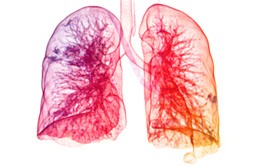3D Imaging Used to Diagnose Lung Disease

By Christina Phillis
Scientists from the University of Southampton have used a 3-D X-ray imaging technology, originally designed to look inside jet engines, to capture images of a particular kind of lung disease.
The Technology
Idiopathic Pulmonary Fibrosis (IPF) is normally diagnosed using a computerized tomography (CT) scan or by using a microscope to view a lung biopsy sample. Accurate diagnosis of IPF can be difficult using these techniques, which is why scientists were eager to try the Microfocus CT. With this new technology, scientists can view lung tissue samples with a similar level of detail as a microscope, but in 3D. The system rotates 360 degrees while taking thousands of 2-D images, which it then uses to build detailed 3-D versions.
Imaging the Spread of a Disease
Using this new technique, scientists were able to uncover new information on how IPF spreads throughout the lungs. IPF is a type of interstitial lung disease that causes inflammation and scarring of the lung tissue. Those diagnosed have difficulty breathing and a life expectancy of three to five years.
The scarring associated with IPF was always thought of as progressing in a wave from the outside to the inside of the lung. But the team of researchers discovered that the disease occurs in many individual areas of the lung at the same time. With this information, doctors can make sure they develop targeted therapies that focus on these areas. According to lead author of the study Mark Jones, accurate diagnosis is essential to starting the correct treatment.
“This technology advance is very exciting as for the first time it gives us the chance to view lung biopsy samples in 3D. We think that the new information gained from seeing the lung in 3D has the potential to transform how diseases such as IPF are diagnosed. It will also help to increase our understanding of how these scarring lung diseases develop, which we hope will ultimately mean better targeted treatments are developed for every patient,” said Jones.
Cell-CT is another 3D imaging system being used to analyze lung tissue samples. According to initial studies it has the potential to make widespread use of lung cancer screening more feasible. These technologies and others are just a few of the ways that the healthcare industry is adopting equipment from other fields to advance the diagnosis and treatment of various diseases.
CLASSROOM DISCUSSION
- Think of another tool or piece of equipment that has the potential to be used across disciplines.
- How does knowing more about a disease early on lead to better treatment?
VOCABULARY
- Computerized Tomography (CT) Scan
- Biopsy
- Interstitial

